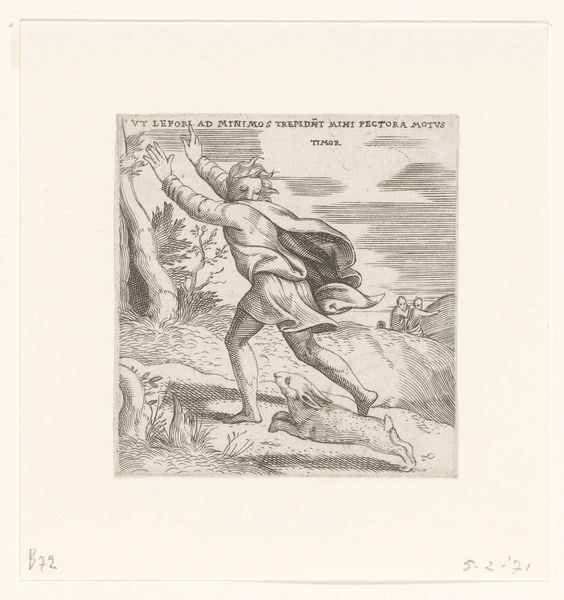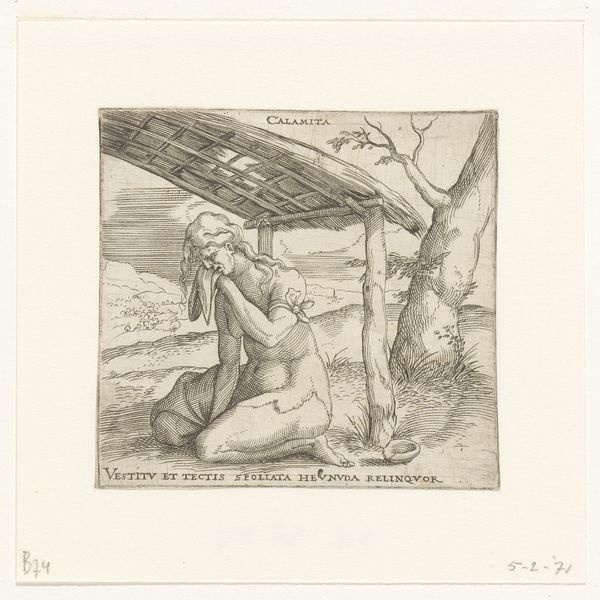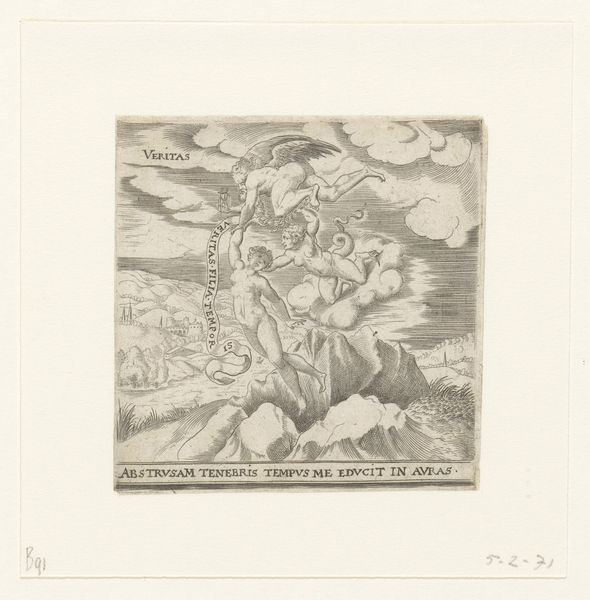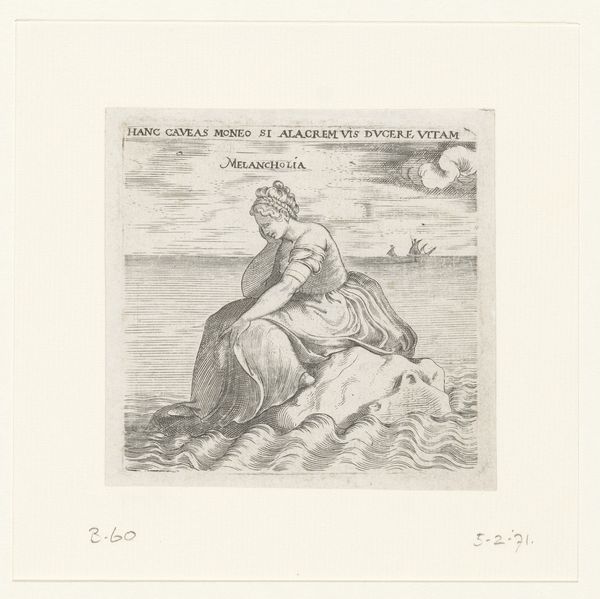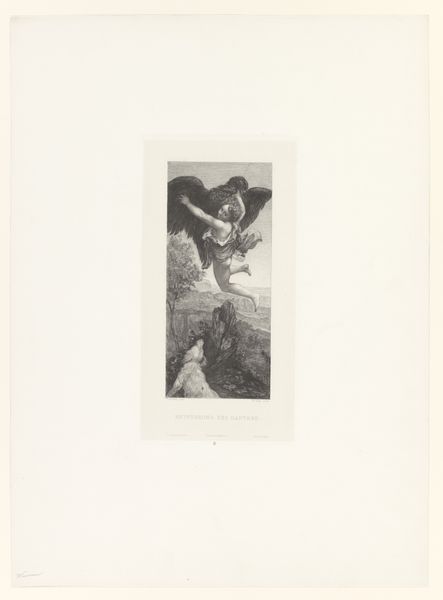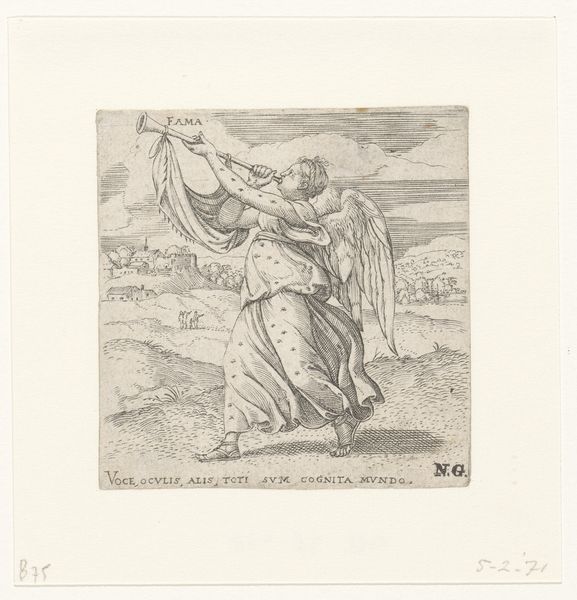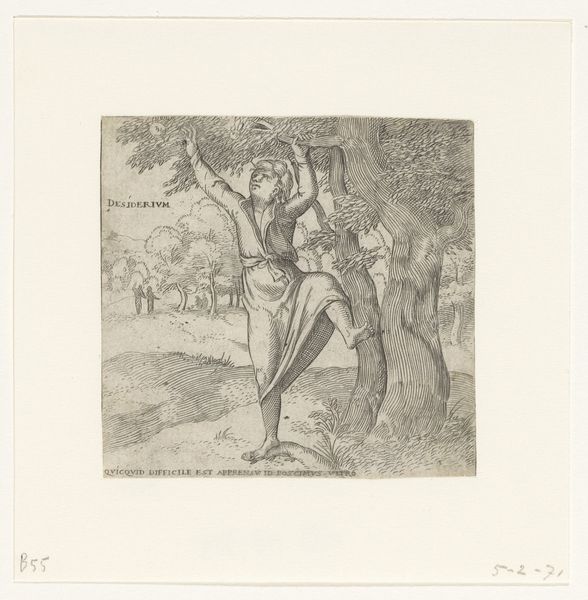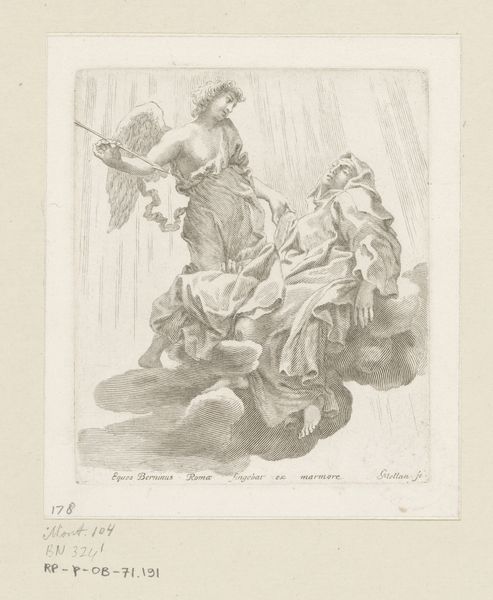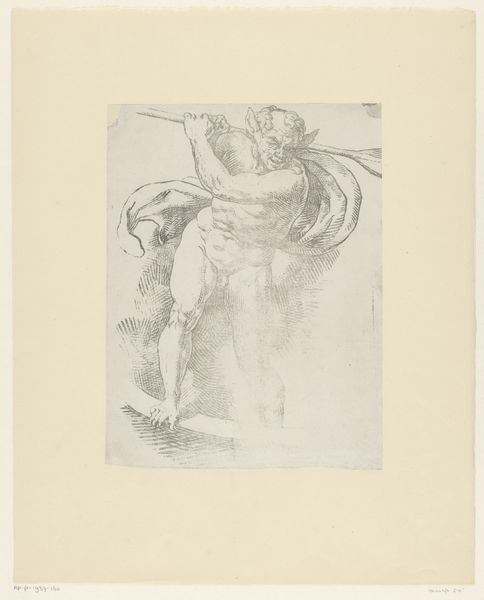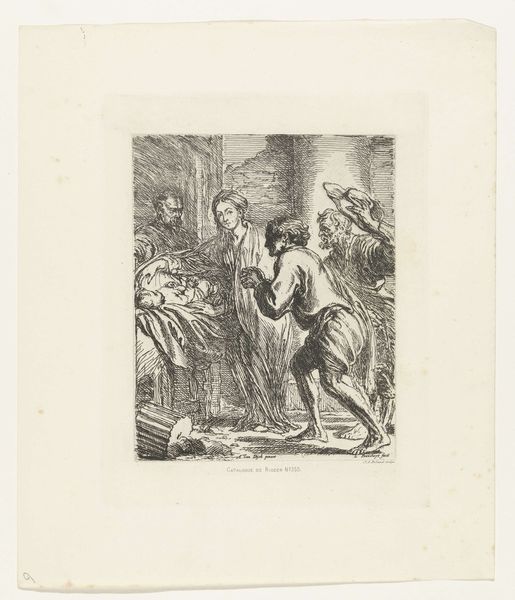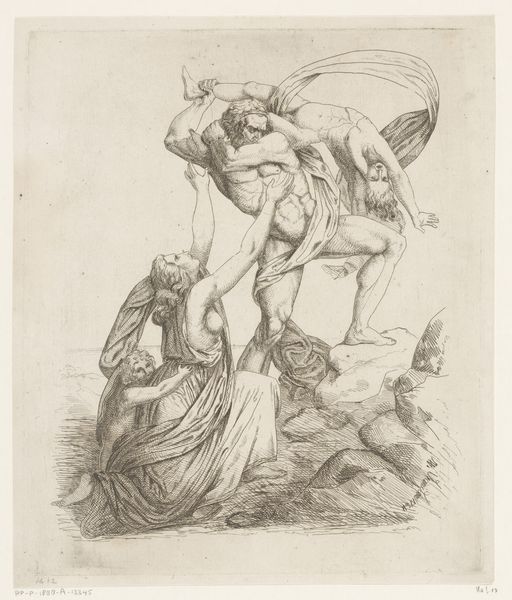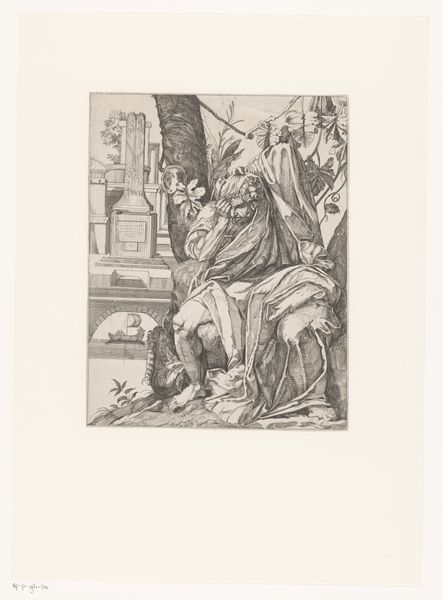
print, engraving
# print
#
mannerism
#
figuration
#
cityscape
#
history-painting
#
engraving
Dimensions: height 81 mm, width 76 mm
Copyright: Rijks Museum: Open Domain
Curator: "Ongeluk," or "Accident," an engraving realized sometime between 1533 and 1567, by Enea Vico. I am drawn in by its stark portrayal of misfortune. Editor: It has a strangely appealing energy. I can almost feel the figure's terror and desperation through Vico's stark, yet expressive lines. The composition is incredibly dynamic. Curator: Absolutely. Consider how the subject’s struggle resonates in historical accounts of violence and marginalization during that period. This Mannerist piece provides a visual window into a time marked by widespread conflict and profound social upheaval, especially the marginalization of the poor. Editor: True, but the immediate drama derives from the diagonal lines: the figure's precarious angle against the crumbling architecture focuses on the sensation of falling and the implied movement. There's a potent interplay of light and shadow which is typical for the engraving art and very prominent here too. Curator: What you read as dynamism can also be understood through the lens of 16th-century class struggles. This artwork symbolizes vulnerability, the fragility of life amidst socio-political unrest, while questioning themes of injustice. The subject in "Ongeluk" might evoke those who lacked protection, cast down by fate and societal structure. Editor: Fair enough. Even divorced from any narrative, the distorted proportions of the body amplify emotional impact. Do you see how the artist renders fabrics? It evokes a specific weight and volume and creates visual textures of flowing and resistance, enhancing the depth of the piece despite its size. Curator: That heightened visual drama makes a powerful argument, visually underscoring historical truths about survival and justice during a time fraught with instability. How can we translate those injustices today? Editor: Perhaps. But I am inclined to find in the expert employment of form a visual poem on the sheer contingency of human experience. Curator: Whether historical outcry or a comment about humanity, Vico’s image serves to engage critical discourses—past and present. Editor: A rather thought-provoking use of the engraver's art.
Comments
No comments
Be the first to comment and join the conversation on the ultimate creative platform.
